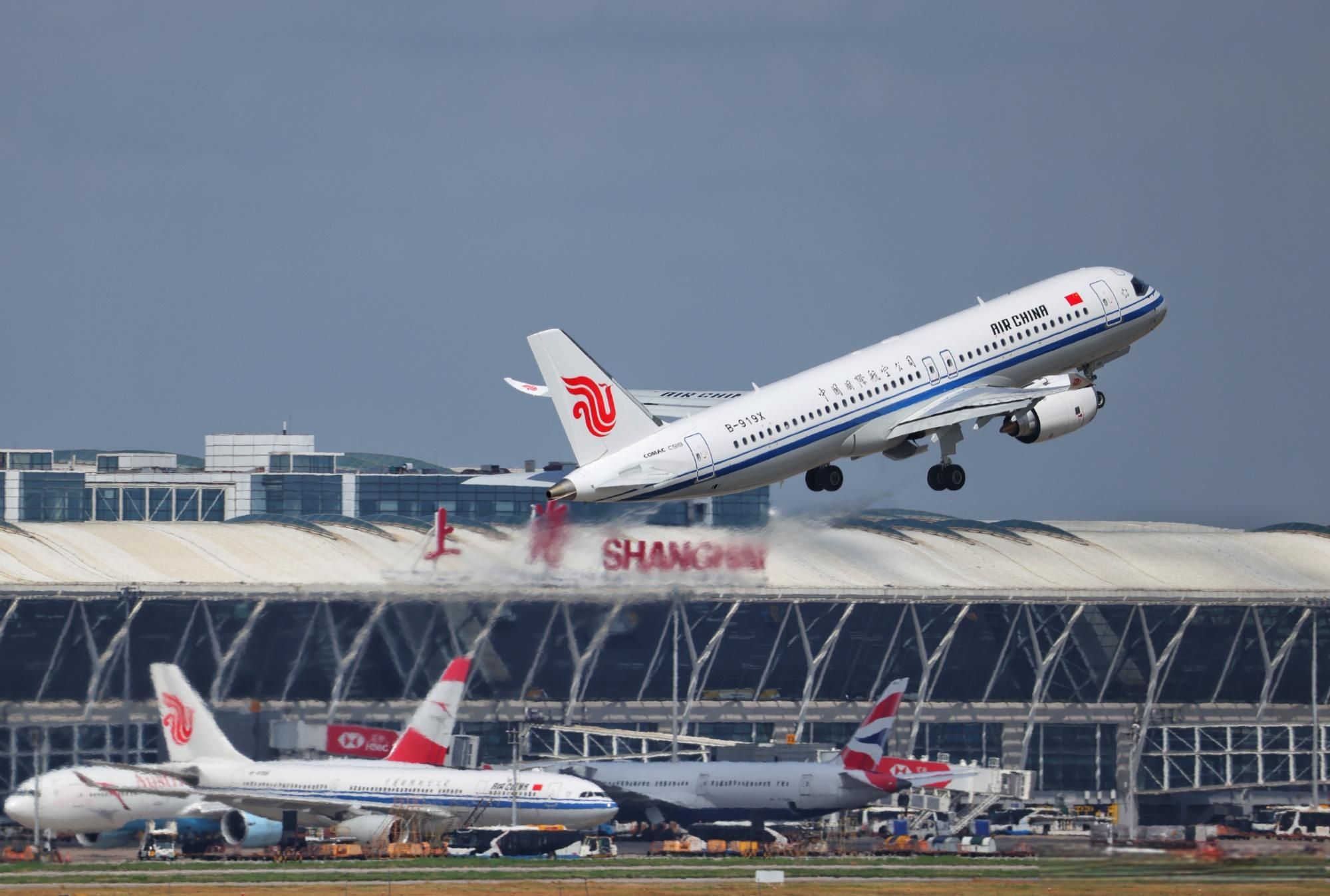Summary
- Air China’s first C919 conducted its inaugural commercial flight from Beijing to Shanghai, marking successful entry into commercial operations.
- Air China ordered 100 C919 aircraft at $108M each with delivery scheduled through 2031 for market adaptability.
- Air China’s C919 has an extended range version with 8 business class, 150 economy class seats, offering a more spacious and comfortable travel experience.
At 1 p.m. on September 10, Air China flight CA1523 landed at Shanghai Hongqiao International Airport (SHA) from Beijing Capital International Airport (PEK), marking the successful maiden flight of Air China’s first C919 aircraft (registration number B-919X) and its official entry into commercial operations.
The first commercial operation of Air China’s C919 took place 13 days after the airline received its first C919 aircraft. On August 28, both Air China and China Southern Airlines received their first C919 aircraft from COMAC on the same day.
Before the flight, Air China held a maiden flight ceremony at Beijing Capital International Airport (PEK), attended by executives from the Civil Aviation Administration of China (CAAC), Air China, and the Capital Airports Holding Company.
Air China also invited two Chinese Olympic champions who had recently won gold medals at the Paris Olympics—star diver Quan Hongchan and star gymnast Liu Yang—to attend the maiden flight ceremony.
Photo: Air China
At the end of April, Air China announced that it had ordered 100 extended-range C919 aircraft from COMAC, with a list price of $108 million per plane.
According to Air China’s announcement, the delivery schedule for its 100 C919 aircraft aligns with the delivery timelines for the 100 planes ordered by China Eastern Airlines in September 2023 and the 100 ordered by China Southern Airlines in April. These deliveries will take place in batches from 2024 to 2031. The specific plan for all three airlines is as follows: 5 aircraft will be delivered in 2024, 10 per year from 2025 to 2027, 15 per year from 2028 to 2030, and 20 in 2031.
Air China’s first C919 aircraft
Among China’s big three, Air China is the only one to choose the extended-range version of the C919, which offers a higher maximum takeoff weight and engine thrust, along with a longer range, providing better market adaptability.
According to COMAC’s official website, the extended-range C919 has a maximum takeoff weight (MTOW) of 78.9 tons, 3.8 tons more than the standard version’s 75.1 tons. The extended-range version has a standard payload range of 5,555 kilometers, a 36% increase over the standard version’s 4,075 kilometers.
Photo: Air China
Air China’s C919 cabin layout includes 8 business class seats and 150 economy class seats, providing passengers with a more spacious travel experience. In comparison, China Southern’s C919 aircraft has a three-class configuration, including business class, Pearl economy class (premium economy), and economy class, for a total of 164 seats. China Eastern’s seven delivered C919s all feature a two-class layout with 164 seats, consisting of 8 business class and 156 economy class seats.
Each seat in Air China’s C919 cabin is equipped with features such as six-way adjustable headrests, high-power and high-speed USB-C and USB-A charging ports, adjustable overhead reading lights, and mobile device stands, offering passengers a more convenient and comfortable experience.
Air China’s C919 operating routes
According to Air China’s announcement, starting from September 11, its C919 will operate two routes: Beijing Capital – Shanghai Hongqiao and Beijing Capital – Hangzhou. The specific details are as follows:
|
CA1507 |
Beijing Capital – Shanghai Hongqiao |
7:30–10:00 |
|
CA1508 |
Shanghai Hongqiao – Beijing Capital |
11:25–13:40 |
|
CA1722 |
Beijing Capital – Hangzhou Xiaoshan |
16:35–18:45 |
|
CA1727 |
Hangzhou Xiaoshan – Beijing Capital |
20:00–22:20 |
Air China also expects to receive its second and third C919 aircraft in October and December, respectively, and plans to use the C919 on routes to Chengdu in the future.



